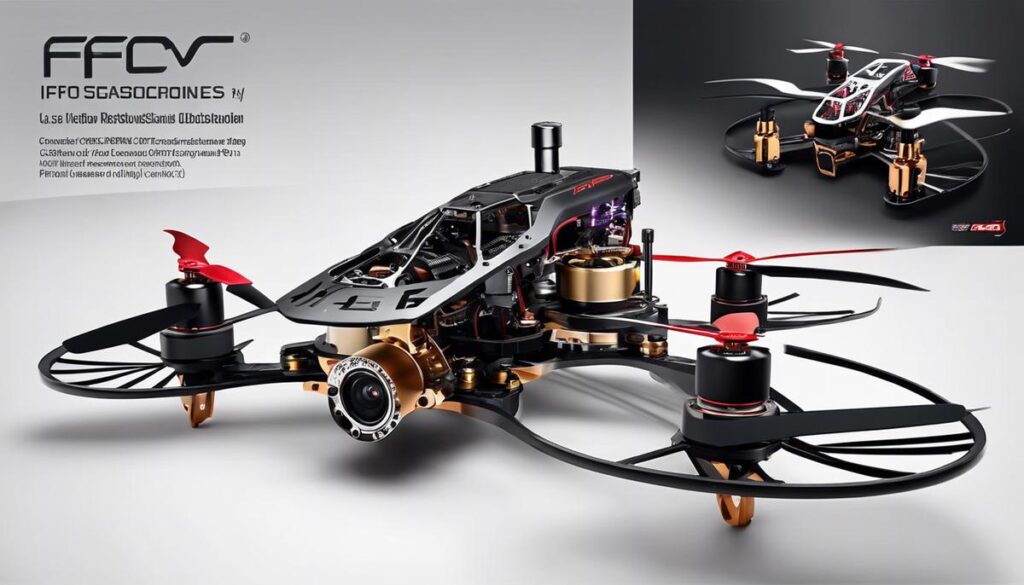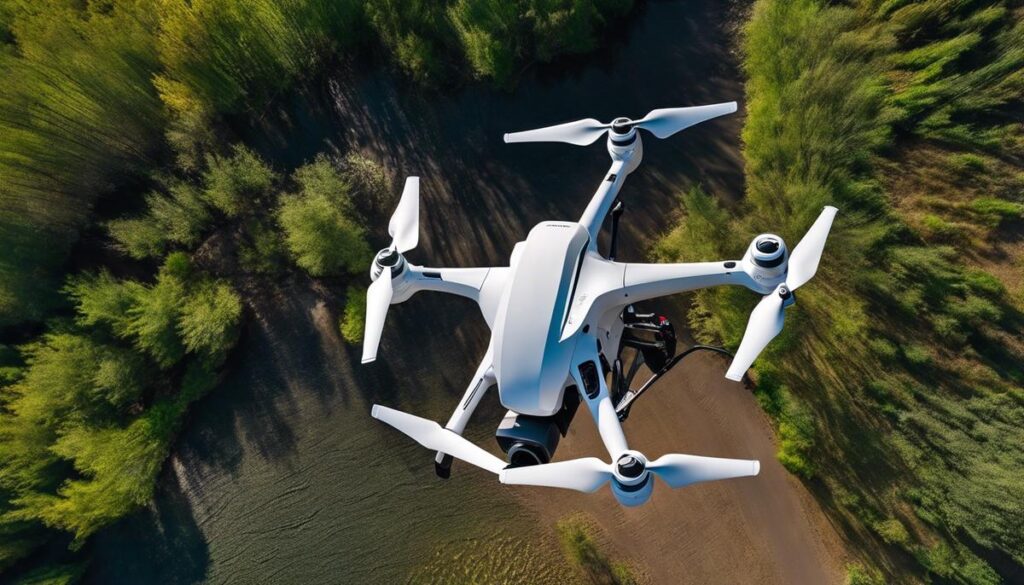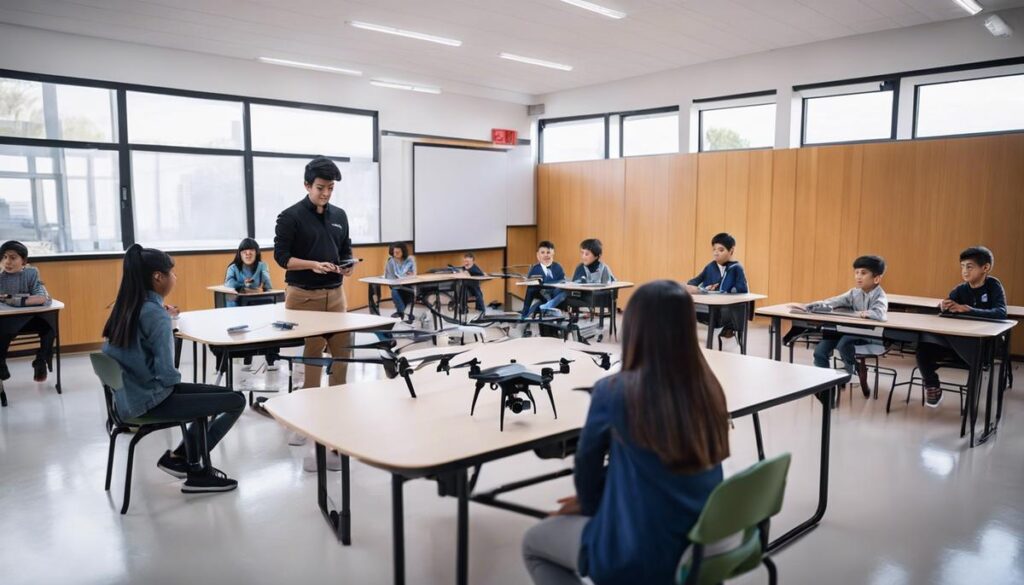The dynamic world of FPV drone racing is an electrifying fusion of high-tech engineering and lightning-fast reflexes. At the heart of this exhilarating spectacle sits the FPV racing drone, an intricate puzzle of cutting-edge components. Speed demons equipped with high-velocity motors, sophisticated flight controllers, and power distribution boards work harmoniously to achieve aerodynamic feats, while advanced camera systems feed live cockpit views to intrepid pilots. As these aviators deftly maneuver through obstacle-laden courses, their rapid decision-making and expert control are testament to rigorous training and innate skill—a ballet of precision flying at breakneck speeds. The relentless pursuit of technological innovation continually reshapes the contours of this sport, pushing the envelope of what is possible. With each pulsating race, FPV drone racing cements its status as a modern marvel, blending human dexterity with the raw power of machines.
Anatomy of FPV Racing Drones
The Thrills of FPV Racing Drones: Inside the High-Octane Technology
Are you ready to dive into the fast-paced world of FPV (First Person View) racing drones? It’s a tech enthusiast’s dream, combining the thrill of high-speed racing with cutting-edge drone technology. Here’s what you need to know about these incredible machines that are transforming hobbies and competitions worldwide.
At the heart of FPV racing drones are their remarkable specs that deliver the adrenaline-pumping experiences pilots crave. First, let’s talk speed. These drones aren’t your typical backyard flyers; they’re designed to zip through courses at over 90 mph. How? It’s all about the powerful motors and lightweight frames. Constructed from materials like carbon fiber, they offer the perfect balance between strength and weight.
The FPV system itself is what puts the pilot in the cockpit. Through a camera mounted on the drone, pilots see the action via goggles or a monitor, navigating complex courses with precision. This isn’t just a feed – it’s a real-time transmission, with minimal latency, crucial for split-second decisions at hair-raising speeds.
Controllers are another piece of the puzzle. While it may look like a standard remote, the technology is anything but ordinary. It’s all about responsiveness, with fine-tuned gimbals and an array of switches and buttons that give the pilot complete control over the drone’s movements.
Battery life is where some compromise comes into play. High performance means more power consumption. Thus, most racing drones have flight times around 5-7 minutes. But don’t let that deter you – the intensity of those minutes is unmatched, and swap-out battery systems mean you’re back in the air quickly.
Lasty, the tech community surrounding FPV racing drones is part of what makes it such a dynamic field. Innovations and customizations are shared freely, pushing the boundaries of what these drones can do. It’s a tech tinkerer’s paradise, where software tweaks and hardware mods can lead to significant performance gains.
In summary, FPV racing drones are a blend of speed, agility, and tech. They represent the bleeding edge of what’s possible with drone technology, through intricately designed components and a community that thrives on pushing the envelope. If you’re someone who’s thrilled by innovation and the thrill of competition, FPV racing drones are where you want to be. Strap in, gear up, and experience the rush. No fluff – that’s the techno thrill ride of FPV drone racing.
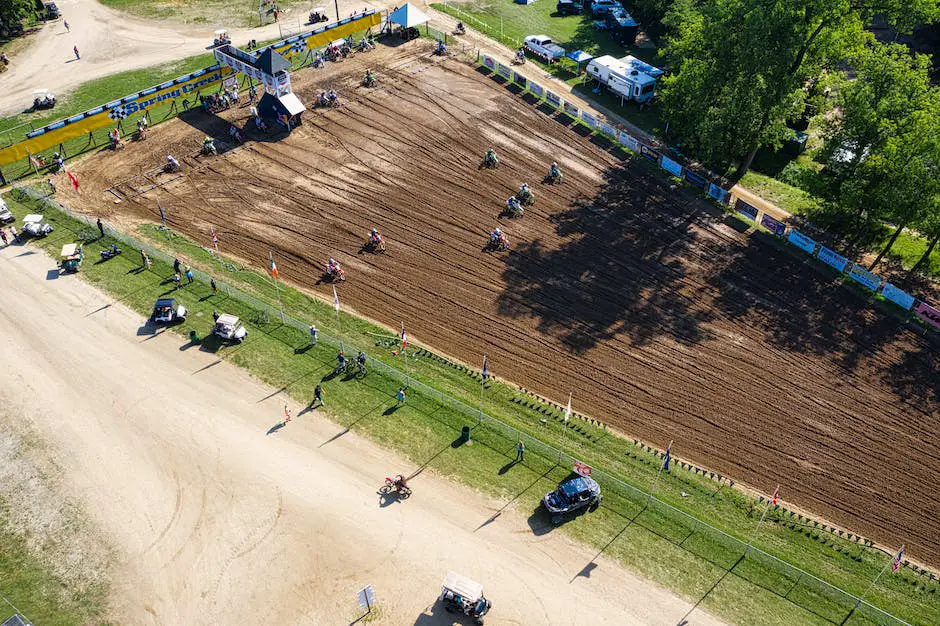
Pilot Skills and Training
Advancing from Aficionado to Ace: Your Path to FPV Drone Racing Mastery
Entering the fast-paced world of FPV (First Person View) drone racing isn’t just about having the coolest tech or the quickest quadcopter. It’s about skill, precision, and the hunger to be the best among flying mavens. With drones zipping through the skies at hair-raising speeds, the adrenaline rush is real. But what does it take to maneuver from an enthusiastic admirer to a respected racing pilot?
Mastering Controls: Stick Time Equals Skill Time
The key to gaining proficiency in FPV drone racing relies heavily on flight time. Practice isn’t just beneficial; it’s mandatory. Every second spent maneuvering through obstacle courses refines reactions and deepens the understanding of your drone’s responsiveness. It’s about developing muscle memory and a natural feel for the controls under various conditions. To truly excel, embrace a rigorous practice routine, which is the cornerstone for any racing prodigy.
Navigate the Learning Curve: Simulators to Real Skies
FPV racing isn’t a walk in the park. It’s a leap into a complex dance of aerobatics, and the learning curve is steep. A low-risk, high-reward way to flatten this incline is to use flight simulators. They offer a rich, cost-effective training ground without the risk of crashing your valuable hardware. Simulators allow for acclimation to FPV viewing angles and racing scenarios, setting you up for smoother real-world flight experiences.
Join the Racing Circuit: Compete, Learn, Iterate
Racing isn’t just about the tech; it’s about the community. Competitions are the testing grounds for pilots, where theories and practices collide with reality. The racing circuit is vital for measuring one’s ability against peers, learning from defeats, and recognizing the importance of strategy. Networking with other pilots can lead to tips on flying techniques, upgrades, and perhaps even sponsorship opportunities.
Leverage Analytics: Tuning for Peak Performance
The analytical approach to drone racing can’t be overstated. It involves scrutinizing flight data, understanding aerodynamics, and tweaking your drone for optimum performance. This is where tech enthusiasts thrive – using telemetry and analytics tools to dissect every turn, acceleration, and maneuver. Personalization is key, and the drone that is fine-tuned to a pilot’s specific style often has the edge.
Safety First: Be Responsible, Stay Informed
The final and most crucial element in the journey to FPV drone racing proficiency is a commitment to safety. Racing drones are potent machines, and responsibility in handling them cannot be understated. Stay informed on FAA regulations, seek proper training, and always ensure your flying area is clear of unintended obstacles or distractions. Safety protects not only the pilot and spectators but also the sport’s reputation.
Turning that dream of becoming an FPV drone racing pilot into a reality is a journey through practice, learning, and community engagement. Hone your skills, understand your equipment inside out, and always fly with a focus on safety. The skies are waiting. Are you ready to take the leap?

Technology Innovations in FPV Racing
In the world of FPV drone racing, technology isn’t just a part of the game; it’s the very essence that transforms it from a hobby into a sport that’s captivating audiences worldwide. The advancements don’t just end with the drones; they extend into the very way pilots train, compete, and ensure the safety of both themselves and their high-speed machines.
One aspect that’s changing the game is the integration of advanced flight software. Pilots are adopting AI-driven algorithms to interpret flight data in real time, allowing for split-second adjustments that can make or break a race. This tech isn’t just for the pros. Beginners can access software to analyze their flight patterns and pinpoint areas for improvement, which transitions drone racing from a trial-and-error exercise into a honed and calculated discipline.
Another frontier is the development of augmented reality (AR) and virtual reality (VR) applications within FPV racing. Training goes beyond the physical world, with pilots able to simulate races in a variety of virtual environments. This isn’t just for practice; imagine live races where spectators can don VR headsets and experience the thrill of the race firsthand from the pilot’s perspective. It’s the fusion of gaming and sports, and it’s drawing a new crowd to FPV racing.
Of course, none of this would be possible without robust networking technologies. The implementation of high-speed, low-latency communication like 5G has the potential to revolutionize live streaming of FPV races. It enables fans to watch high-definition footage from drones whizzing by at breakneck speeds without missing a beat. This level of connectivity is making FPV racing more accessible and enjoyable for viewers around the globe.
In the pursuit of streamlined performance, customized drone firmware is another piece of tech that can’t be ignored. While stock firmware works for casual flyers, those serious about racing are tailoring their drone’s inner workings to suit their unique flying style. Custom firmware facilitates everything from better battery management to adjustable flight parameters, giving the pilot an unparalleled level of control over their machine.
But as with any fast-paced technological evolution, ethics and regulation play a critical role. As drone technology becomes increasingly sophisticated, the community is proactive in establishing guidelines that promote responsible flying. These guidelines aren’t just about safety; they’re about ensuring that FPV racing remains a respected and legitimate sport. The community collaborates with regulatory bodies to develop standards that keep races fair, drones in check, and the public safe.
FPV drone racing is more than just a sport. It’s a showcase of the latest advancements in technology, where pilots become engineers and spectators become part of an immersive experience. It’s clear that technology isn’t just propelling FPV drones through the air; it’s propelling the entire sport into the future.
As drone racing continues to push the boundaries of what’s possible, tech enthusiasts and pilots alike are crucial to its success. Stay tuned, stay engaged, and most importantly, keep flying.
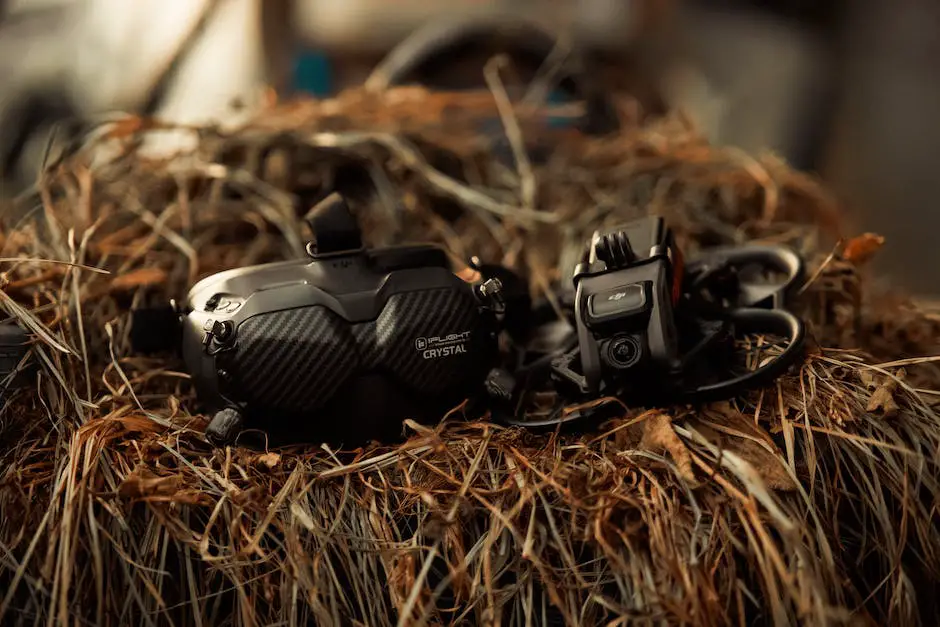
FPV Racing Leagues and Competitions
Leading FPV Drone Racing Leagues to Watch
With an array of drone enthusiasts eagerly awaiting to push their piloting skills to the limit, FPV drone racing leagues are on the rise, fostering competition while showcasing technological marvels. So, let’s zoom in on the leagues leading the charge in this high-octane arena.
Drone Racing League (DRL)
DRL is a premier name when it comes to competitive FPV racing. Boasting custom-designed drones that reach speeds of over 80 mph, DRL fuses the thrill of racing with the intricacies of aerodynamics and electronic sophistication. In this league, precision and reflexes are tantamount to success. Precision-engineered drones flirt with the boundaries of physics, whisper-thin margins separating the victors from the also-rans.
MultiGP Drone Racing League
Grassroots by design and global in reach, MultiGP has carved out its niche as the community-centric heartbeat of drone racing. The league caters to pilots of various skill levels and has built a massive track library that’s open to its members. It is the network where hobbyists turn into pros and where teamwork intersects with tech-savvy strategy sessions.
International Drone Racing Association (IDRA)
Focusing on the international scene, IDRA has been a platform for pilots worldwide to compete and display their technical prowess. As technology hurdles forward, IDRA has incorporated international regulations, ensuring a safe and competitive environment. This league is where pilots’ skills are put to a stern test against the backdrop of universal camaraderie amongst competitors.
These leagues drive the sport forward, with tech enthusiasts and trailblazing pilots at their core. They are not just celebrations of flying agility and speed but also of community, innovation, and the undeferred dreams of a better-connected, tech-empowered world. Drone racing is more than a sport; it’s a vista of future possibilities, a canvas where technology meets human ambition—sky-high and accelerating.
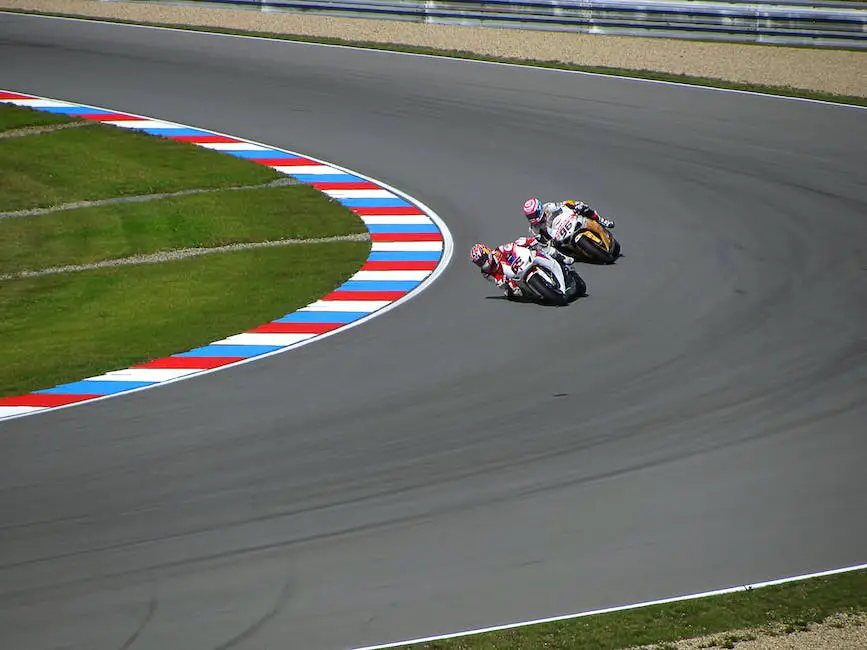
Regulations and Legalities of FPV Drone Racing
Navigating Regulatory Airspace: Clearing the Path for FPV Drone Racing
FPV drone racing captivates tech enthusiasts with a blend of high-speed action and cutting-edge innovation. Yet, diving into the competitive arena isn’t just about skill and technology; it’s also about understanding the regulations that ensure safety and fair play.
This isn’t a game; skies are regulated for good reasons. Drones pose novel challenges for airspace regulators like the FAA in the United States. Let’s cut to the chase and discuss these hurdles, ensuring every enthusiast stays compliant and competition thrives.
First, pilots must register their drones with relevant authorities. It’s not just red tape; it’s about accountability. Think of it as a license plate for your aerial hot rod.
Know the ceiling – there are altitude limits to consider. Most regions cap drone flight to avoid interference with manned aircraft. This ceiling isn’t just a suggestion; it’s enforced rigidly. Monitor your altitude to stay out of trouble.
Flying over crowds is a big no-no. Safety concerns trump the thrill of aerial acrobatics. Ensure your racecourse is clear of bystanders. Remember, a rogue drone can be more than just an inconvenience; it can be a hazard.
Broadcasting your FPV feed? There’s a legal aspect to this as well. You may need an amateur radio license, as transmission falls under FCC regulations. No one wants a fine to be part of their racing legacy.
Crossing lines – quite literally. Flights beyond the visual line of sight (BVLOS) demand specific permissions. Racing typically operates within visual range, but any push into BVLOS territory requires regulatory approval.
Regarding privacy, pilots must steer clear of sensitive areas or risk heavy penalties. Data protection laws also intersect with drone usage, as onboard cameras can capture more than just race highlights.
Engage with local flying clubs and national bodies. Many have experienced pilots and legal advisors who can offer a wealth of information. Being part of a community not only keeps you informed but can also provide a unified voice when dealing with regulators.
Finally, insurance isn’t merely advisable; sometimes, it’s obligatory. Crashes aren’t just likely, they’re part of the learning curve. Insurance offers a safety net for both pilots and property.
Remember, regulation isn’t the enemy. It’s the framework that allows this amazing sport to operate safely for everyone involved. Stay informed, stay compliant, and keep racing forward. The future of FPV drone racing depends on pilots and enthusiasts working within the rules, even as they push the limits of what’s possible.
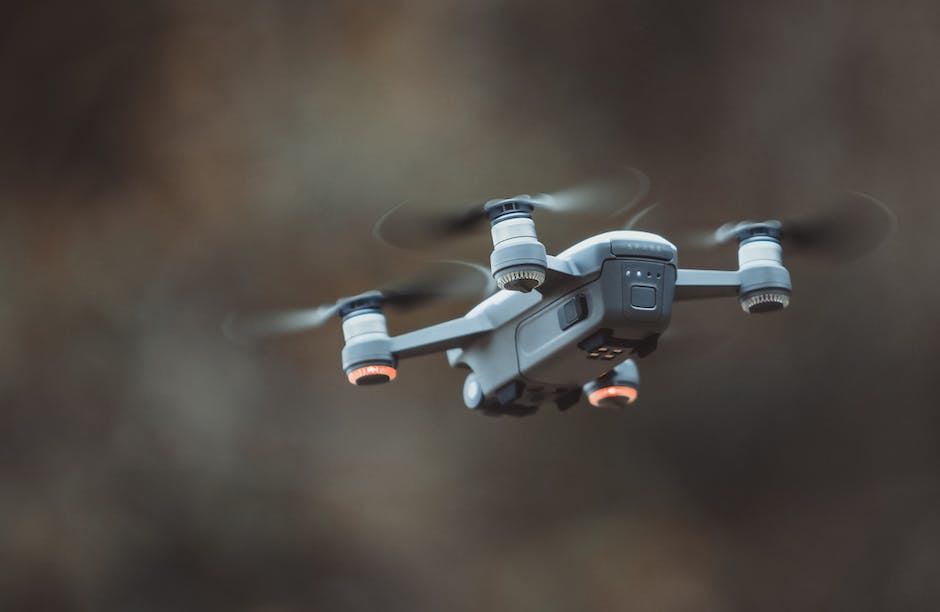
The high-stakes world of FPV drone racing is ever-evolving, driven by advancements in technology and honed by the dedicated skills of its pilots. As we look towards the horizon, the sport’s trajectory is clear: it will soar to greater heights, fueled by the passion of its community and the continuous refinement of its technologies and regulations. The ingenuity displayed within the piloting community, coupled with the collaborative spirit amongst tech developers and regulatory bodies, ensures that FPV drone racing will not only remain a competitive battleground but also a canvas for innovation. From backyard challenges to the global arena, the propellers will continue to whirl, the crowds will roar, and the relentless spirit of competition will propel this thrilling domain towards a future bright with promise and excitement.

